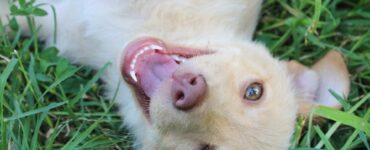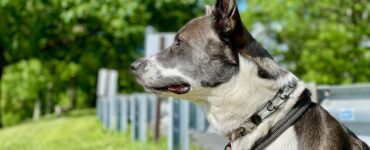There are many types and reasons for dog aggression. The following is a list of “what makes dogs aggressive.”
Prey Drive : the desire to chase movement. Aggressive dogs high in prey drive will bite when stimulated by movement. These are classic Schutzhund dogs.
Territoriality : aggressive behavior due to guarding traits; dogs may guard the home or the yard.
Natural Protection : aggressive behavior exhibited due to the guarding of the dog’s owner. This does not include the house and the yard, only a specific person or people.
defense: aggression due to the dog guarding his or her own body. This type of aggressive behavior is different from dominance. Aggression due to defense is based on fear, whereas dominance is based on the dog’s will.
Dominance : the dog that decides when and what he will do is dominant, and this includes dog-to-dog aggression. In some dog breeds and mixed breeds, this leads to aggression. Even the most dominant dogs can be trained to be less aggressive through effective obedience training. Left untrained, their dominance often leads to an overtly aggressive dog. Interestingly, dominant dogs usually have very stable nervous systems.
Re-directed : A dog that is in one mode of aggression may get distracted by another and re-direct his aggression towards the new object, person, or other animal. Terriers have high prey drives and redirected aggression.
Object Aggression : Aggression due to toy or food guarding.
Sibling : signs of aggression that are exhibited when littermates or dogs of similar age or dominance level fight.
Same Sex : This is when two males or two females fight for dominance of the household.
Inappropriate Aggression : This is any type of aggression that is not provoked and/or warranted.
Tips for Correcting Dog Aggression
Dog owners who have dogs with tendencies toward aggression, characterized by growling, a fighting posture, snarls, snaps, or lunges, should absolutely not bring them to public dog parks or any other public dog areas. These characteristics are threats. Additionally, if your dog exhibits these traits, make sure that you walk him with a choke chain collar. Normal nylon collars can easily snap, allowing the dog to get loose.
Some breeds of dogs do not like to be touched. Often, household family members may get bitten due to the handling of the dog. Handling problems are common in pet dogs. Aggression between dogs and children is a very serious problem. Therefore, dogs must be taught to accept and enjoy being handled. Otherwise, they may threaten or bite. Gradual exercises can desensitize dogs to being patted, hugged, grabbed by their collars, and so forth. It is imperative, however, if an owner has a dog who exhibits signs of aggression to begin obedience training immediately and keep the dog away from other animals and people until the threatening behaviors subside.
The laws of today hold dog owners negligent if their dog bites a person or another dog without provocation. The dog owner can be sued for the cost of medical bills, trauma to the individual or animal that was bitten, and any other incidentals caused by the bite. Home insurance covers these types of lawsuits; however, the increase in premiums is always significant and can be a reason for policy cancellation in some cases. Additionally, the dog that bites will normally be held for 10 days, tested for abnormal aggression, and listed in the county’s list of “dangerous dogs.” If the dog bites again, most state laws require euthanizing the dog.
Dog Aggression Tips
Breed or select dogs for their friendliness to all people, not just certain people. Some dog breeds are prone to aggressive behaviors.
Avoid negative experiences, especially with puppies.
Attend reputable puppy or dog classes.
Handle all body parts of the dog extensively—the goal is a dog who is relaxed and likes to be touched.
Teach puppies to be relaxed around people and their possessions.
Maintain socialization throughout a dog’s life.
Keep a watchful eye out for aggressive warning signs (growling, snarling, lunging, fighting postures, etc.) and intervene early with help from a qualified trainer.
Never approach or run at a strange dog; let the dog approach you (after the owner’s consent).
Teach children about dog safety and respect for animals.







